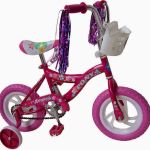
Are Aero Bars Worth It?
- 1- What Are Aero Bars and How Do They Work?
- 2- Benefits of Using Aero Bars for Cycling
- 3- How Aero Bars Impact Performance
- 4- Things to Consider Before Installing Aero Bars
- 5- Expert Opinions on Aero Bars
1- What Are Aero Bars and How Do They Work?
Aero bars, also known as triathlon bars or clip-on aero bars, are a popular piece of equipment used in cycling, especially for time trials, triathlons, or long-distance races. These handlebars are designed to place the rider in a more aerodynamic position, reducing air resistance and improving overall cycling efficiency.
Aero bars work by allowing the rider to adopt a forward, bent-elbow position that lowers their upper body, making them more streamlined. This positioning reduces the drag produced by the wind, enabling cyclists to maintain higher speeds with less effort.
2- Benefits of Using Aero Bars for Cycling
There are several advantages to using aero bars, particularly for competitive cyclists or those looking to improve their endurance during long rides:
- Improved Aerodynamics: The primary benefit of aero bars is their ability to reduce wind resistance. By lowering the rider's torso and keeping their arms close to the body, they can significantly decrease drag, leading to faster speeds.
- Increased Comfort: When used correctly, aero bars can help reduce upper body strain, allowing cyclists to ride for longer periods without experiencing discomfort. This is especially beneficial during time trials or races that require sustained effort.
- Better Efficiency: The aerodynamic position encouraged by aero bars allows cyclists to use less energy to maintain higher speeds. This can be especially useful for athletes looking to optimize their performance in a competitive setting.
- Enhanced Control: Some cyclists find that aero bars offer better control over their bike, especially when riding at high speeds on flat terrain. The forward position allows for more precise handling and balance.
3- How Aero Bars Impact Performance
When properly installed and used, aero bars can have a dramatic impact on a cyclist's performance, especially in races or long-distance rides. By reducing the amount of wind resistance, riders can maintain higher speeds with less effort, improving their time during a race or extending their endurance on longer rides.
Studies have shown that cyclists can gain a significant speed advantage, sometimes even shaving off minutes from their time in a race. This is particularly noticeable in events like triathlons, where cycling performance plays a key role in overall race outcomes.
However, it is important to note that the benefits of aero bars are more noticeable for riders who spend considerable time in the saddle and have mastered their cycling technique. For casual riders, the improvements may be less pronounced.
4- Things to Consider Before Installing Aero Bars
While aero bars offer numerous benefits, they may not be suitable for every cyclist. Here are a few things to consider before installing them on your bike:
- Comfort and Fit: Aero bars require a specific riding posture that might not be comfortable for everyone, especially beginners or those with back or neck issues. It's crucial to make sure the fit is right for your body type.
- Type of Cycling: Aero bars are most beneficial for time trials and triathlons. If you're an everyday commuter or enjoy more technical riding (such as mountain biking), aero bars might not be the best choice for you.
- Handling: Aero bars can affect your bike handling. In tight spaces or while navigating sharp turns, the lower body position can sometimes compromise maneuverability. Consider this factor before making the decision.
- Cost: While not excessively expensive, aero bars come at a cost. Depending on the quality and design, prices can range from affordable to premium. Be sure to assess your needs and budget accordingly.
5- Expert Opinions on Aero Bars
Experts generally agree that aero bars can be incredibly beneficial for cyclists looking to improve their speed and efficiency during long rides or races. However, many emphasize the importance of proper installation and fitting to ensure that the rider is positioned comfortably and efficiently.
According to professional cyclists and coaches, mastering the use of aero bars requires time and practice. Riders need to develop good core strength and balance to effectively use aero bars without compromising comfort or safety. They also recommend adjusting the aero bars frequently to ensure optimal positioning based on body type and riding style.
If you're interested in optimizing your performance with aero bars, be sure to check out our site, Cycling Guider, for the best products and recommendations for your cycling needs. We offer expert advice on how to choose and install aero bars, along with other cycling accessories to enhance your experience.







 Billet BMX5.0 (2 reviews)
Billet BMX5.0 (2 reviews) Far East Children Bicycle Factory1.0 (1 reviews)
Far East Children Bicycle Factory1.0 (1 reviews) Archer Motorsports, Inc.4.0 (8 reviews)
Archer Motorsports, Inc.4.0 (8 reviews) YEP Bike Works4.0 (55 reviews)
YEP Bike Works4.0 (55 reviews) Gorham Bike & Ski4.0 (498 reviews)
Gorham Bike & Ski4.0 (498 reviews) Alchemy Bikes4.0 (37 reviews)
Alchemy Bikes4.0 (37 reviews) How to Teach Kids to Ride a Bike: A Step-by-Step Guide for Parents
How to Teach Kids to Ride a Bike: A Step-by-Step Guide for Parents Tips for Riding on Busy City Streets: Smart Strategies for Urban Cyclists
Tips for Riding on Busy City Streets: Smart Strategies for Urban Cyclists Best US National Parks for Mountain Biking: Ride Epic Trails Across America
Best US National Parks for Mountain Biking: Ride Epic Trails Across America Best Aero Helmets for Time Trials and Racing
Best Aero Helmets for Time Trials and Racing How to Clean and Lubricate Your Bike Chain Like a Pro
How to Clean and Lubricate Your Bike Chain Like a Pro 10 Must-Have Items for Long-Distance Cycling Trips
10 Must-Have Items for Long-Distance Cycling Trips